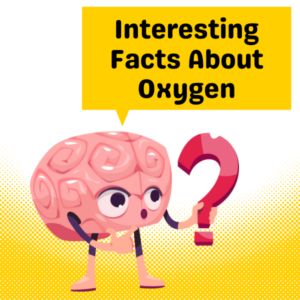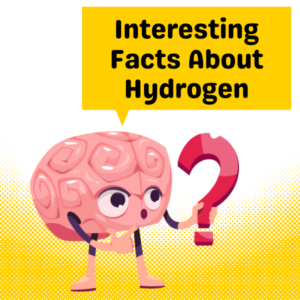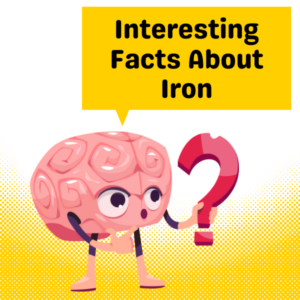Nitrogen is an essential element that plays a crucial role in various aspects of our lives. From the air we breathe to the food we eat, nitrogen is all around us. In this article, we will explore some interesting facts about nitrogen that you may not be aware of.
Firstly, did you know that nitrogen makes up about 78% of the Earth’s atmosphere? This means that the majority of the air we breathe is composed of nitrogen gas.
Despite its abundance, nitrogen is relatively inert and does not readily react with other elements. This property makes it an ideal gas for various industrial applications, such as in the production of ammonia and fertilizers.
Another fascinating fact about nitrogen is its role in the growth of plants. Nitrogen is a vital nutrient for plant growth and is often a key component of fertilizers. It helps plants to develop healthy leaves, stems, and roots.
Without an adequate supply of nitrogen, plants may exhibit stunted growth and reduced productivity.
Interesting Facts About Nitrogen
The Most Abundant Element in Earth’s Atmosphere
Nitrogen makes up about 78% of Earth’s atmosphere, making it the most abundant element in the air we breathe.
Essential for Life
Nitrogen is a crucial element for all living organisms, as it is a key component of proteins, DNA, and other biological molecules.
Used in Food Packaging
Nitrogen is often used in food packaging to help preserve freshness and prevent spoilage, as it inhibits the growth of bacteria and other microorganisms.
Forms an Inert Gas
Nitrogen is an inert gas, meaning it does not readily react with other elements or compounds under normal conditions.
Used in Fire Suppression Systems
Nitrogen is commonly used in fire suppression systems, as it can displace oxygen and effectively extinguish fires without causing damage.
Found in Ammonia
Nitrogen is a major component of ammonia, a compound used in fertilizers, cleaning products, and various industrial processes.
Used in Liquid Nitrogen
Liquid nitrogen, which is extremely cold at around -196°C (-321°F), is used in various applications, including cryogenic freezing and preserving biological samples.
Forms Nitrous Oxide
Nitrogen can combine with oxygen to form nitrous oxide, commonly known as laughing gas, which is used as an anesthetic in dentistry and surgery.
Used in Tire Inflation
Nitrogen is sometimes used to inflate tires, as it can help maintain tire pressure for a longer period, resulting in improved fuel efficiency and tire lifespan.
Discovered by Daniel Rutherford
In 1772, Scottish chemist Daniel Rutherford discovered nitrogen by removing oxygen and carbon dioxide from air, leaving behind a gas that did not support combustion or life.
Used in Air Conditioning
Nitrogen is often used in air conditioning systems to purge and pressurize the refrigerant lines, ensuring the removal of any moisture or contaminants.
Forms Nitric Acid
Nitrogen dioxide, a compound formed by nitrogen and oxygen, can dissolve in water to produce nitric acid, which is used in the production of fertilizers and explosives.
Used in the Production of Stainless Steel
Nitrogen is used in the production of stainless steel to improve its strength, corrosion resistance, and other mechanical properties.
Forms Nitrate in Soil
Nitrogen compounds, such as nitrates, are essential nutrients for plants and are often added to soil as fertilizers to promote healthy growth.
Used in the Production of Nylon
Nitrogen is a key component in the production of nylon, a versatile synthetic polymer used in various applications, including textiles and plastics.
Forms Nitric Oxide
Nitric oxide, a compound formed by nitrogen and oxygen, plays a crucial role in regulating blood pressure and immune function in the human body.
Used in the Production of Explosives
Nitrogen compounds, such as ammonium nitrate, are commonly used in the production of explosives, including dynamite and fireworks.
Forms Nitrogen Fixing Bacteria
Nitrogen-fixing bacteria have the ability to convert atmospheric nitrogen into a form that plants can use, playing a vital role in the nitrogen cycle and ecosystem.
Used in the Production of Electronics
Nitrogen is used in the production of electronics, such as transistors and integrated circuits, to create a controlled atmosphere during manufacturing processes.
Forms Nitrogen Gas Lasers
Nitrogen gas lasers, also known as nitrogen lasers, produce a high-intensity beam of ultraviolet light and are used in scientific research and industrial applications.
Related: Interesting Facts About Silicon
Fun Facts About Nitrogen for Students and Kids
1. Nitrogen is the most abundant gas in Earth’s atmosphere.
Nitrogen makes up about 78% of the air we breathe, but it is colorless, odorless, and tasteless, so we can’t see or sense it.
2. Nitrogen is essential for all living organisms.
Plants and animals need nitrogen to build proteins, which are important for growth and development.
3. Nitrogen is used to preserve food.
By replacing oxygen with nitrogen, food can stay fresh for longer periods, preventing spoilage and maintaining quality.
4. Nitrogen is used in making fireworks.
When heated, nitrogen compounds produce vibrant colors in fireworks displays, adding excitement to celebrations.
5. Nitrogen is a major component of DNA and RNA.
These molecules contain nitrogen bases, which are crucial for storing and transmitting genetic information.
6. Nitrogen is used in the production of fertilizers.
By converting nitrogen gas into ammonia, fertilizers can be created to enhance plant growth and increase crop yields.
7. Nitrogen is found in the Earth’s crust.
Although nitrogen is mainly present in the atmosphere, it can also be found in minerals and rocks, contributing to the Earth’s composition.
8. Nitrogen is used in the manufacturing of electronics.
It is used to create a controlled atmosphere during the production of semiconductors and other electronic components.
9. Nitrogen gas is used to inflate tires.
By filling tires with nitrogen instead of regular air, they can maintain proper pressure for longer, resulting in improved fuel efficiency and tire lifespan.
10. Nitrogen is involved in the nitrogen cycle.
Through processes like nitrogen fixation and denitrification, nitrogen is continuously recycled in the environment, ensuring its availability for living organisms.
11. Nitrogen is used in the medical field.
It is used to preserve biological samples, such as blood and tissues, and as a cryogenic agent for freezing and storing cells and tissues.
12. Nitrogen is a key component of airbags.
During a car collision, a chemical reaction involving nitrogen gas rapidly inflates the airbag, providing cushioning and protection to the occupants.
Related: Interesting Facts About Barium
Most Common Uses of Nitrogen
1. Nitrogen in Fertilizers
Nitrogen is a vital component in fertilizers, as it plays a crucial role in promoting plant growth. It is an essential nutrient required for the development of proteins, enzymes, and chlorophyll in plants.
By providing nitrogen to the soil, fertilizers help improve crop yield and enhance the overall quality of agricultural produce.
2. Nitrogen in Food Packaging
Nitrogen is commonly used in the food packaging industry to preserve the freshness and quality of various perishable products. By replacing oxygen with nitrogen in food packaging, the growth of bacteria and other microorganisms is significantly slowed down, extending the shelf life of the food.
This technique is particularly effective for preserving snacks, coffee, and other packaged goods.
3. Nitrogen in the Chemical Industry
Nitrogen is extensively used in the chemical industry for various purposes. It is a key component in the production of ammonia, which is further used in the manufacturing of fertilizers, explosives, and cleaning agents.
Nitrogen is also utilized in the production of nitric acid, which is essential for the production of fertilizers, dyes, and pharmaceuticals.
4. Nitrogen in the Electronics Industry
Nitrogen is widely employed in the electronics industry for its inert properties. It is used during the manufacturing process to create an oxygen-free environment, preventing oxidation and ensuring the quality and reliability of electronic components.
Nitrogen is also utilized in the production of semiconductors, flat panel displays, and other electronic devices.
5. Nitrogen in the Medical Field
In the medical field, nitrogen finds various applications. It is used in cryotherapy, a technique that involves freezing abnormal tissues or cells to remove them.
Nitrogen is also utilized in the preservation of biological samples, such as sperm, eggs, and tissues, for future use in assisted reproductive technologies and medical research.
6. Nitrogen in the Automotive Industry
Nitrogen is commonly used in the automotive industry for tire inflation. Nitrogen-filled tires offer several advantages over regular air-filled tires, including improved fuel efficiency, longer tire life, and enhanced safety.
Nitrogen helps maintain tire pressure more consistently, reducing the risk of blowouts and ensuring optimal performance on the road.
7. Nitrogen in the Aerospace Industry
Nitrogen is extensively used in the aerospace industry for various applications. It is employed as an inert gas in aircraft fuel systems to prevent the formation of explosive mixtures.
Nitrogen is also used to pressurize and purge fuel tanks, ensuring safety during flight. Additionally, it is utilized in the production of rocket propellants and as a coolant in certain aerospace systems.
Chemistry of Nitrogen
Nitrogen is a chemical element with the symbol N and atomic number 7. It is a colorless, odorless, and tasteless gas that makes up about 78% of the Earth’s atmosphere.
The chemistry of nitrogen is fascinating, with its unique properties and diverse compounds. In this article, we will explore the discovery, history, and basic chemistry of nitrogen.
Discovery
Nitrogen was first discovered by the Scottish physician Daniel Rutherford in 1772. He conducted an experiment where he burned a candle in a closed container until it extinguished, leaving behind a gas that did not support combustion or life.
Rutherford called this gas “noxious air” and later named it nitrogen, derived from the Greek words “nitron” meaning saltpeter and “genes” meaning forming.
History
The history of nitrogen dates back to ancient times when it was used in the production of saltpeter, a key ingredient in gunpowder. However, it was not until the 18th century that nitrogen was recognized as an element.
In the early 20th century, the Haber-Bosch process was developed, allowing for the large-scale production of ammonia from nitrogen gas. This process revolutionized agriculture by providing a readily available source of nitrogen for fertilizers.
Basic Chemistry
Nitrogen is a nonmetal and belongs to Group 15 of the periodic table. It has five valence electrons, which means it can form three covalent bonds. Nitrogen gas (N2) is the most stable form of nitrogen and consists of two nitrogen atoms bonded together by a triple bond.
This triple bond is incredibly strong, making nitrogen gas relatively inert and unreactive under normal conditions.
However, nitrogen can form a wide range of compounds by reacting with other elements. For example, it can combine with hydrogen to form ammonia (NH3), a compound widely used in the production of fertilizers and household cleaners.
Nitrogen also plays a crucial role in the structure of proteins and nucleic acids, which are essential for life.
Interesting Physical Properties of Nitrogen
1. Colorless and Odorless
Nitrogen is a colorless and odorless gas at room temperature. This property makes it difficult to detect or identify nitrogen without the use of specialized equipment. It is often used in various industries, such as food packaging and electronics, due to its inert nature and lack of sensory characteristics.
2. Low Boiling and Melting Points
Nitrogen has a very low boiling point of -195.8°C (-320.4°F) and a melting point of -210.0°C (-346.0°F). These low temperatures make nitrogen suitable for various cryogenic applications, such as preserving biological samples, freezing food, and cooling superconducting materials.
3. Non-Flammable
Nitrogen is a non-flammable gas, meaning it does not support combustion. This property makes it a safe choice for applications where fire hazards need to be minimized. Nitrogen is often used in fire suppression systems, as it can displace oxygen and suffocate flames.
4. High Solubility in Liquids
Nitrogen has a high solubility in various liquids, particularly in water. This property allows nitrogen to dissolve in water bodies, contributing to the nutrient cycle in aquatic ecosystems. Additionally, the solubility of nitrogen in liquid oxygen is utilized in the production of liquid rocket propellants.
5. Denser than Air
Nitrogen is slightly denser than air, with a density of 1.25 grams per liter at standard conditions. This property causes nitrogen gas to settle near the ground when released, which can lead to the displacement of oxygen in confined spaces. Proper ventilation is crucial when working with nitrogen to prevent asphyxiation.



